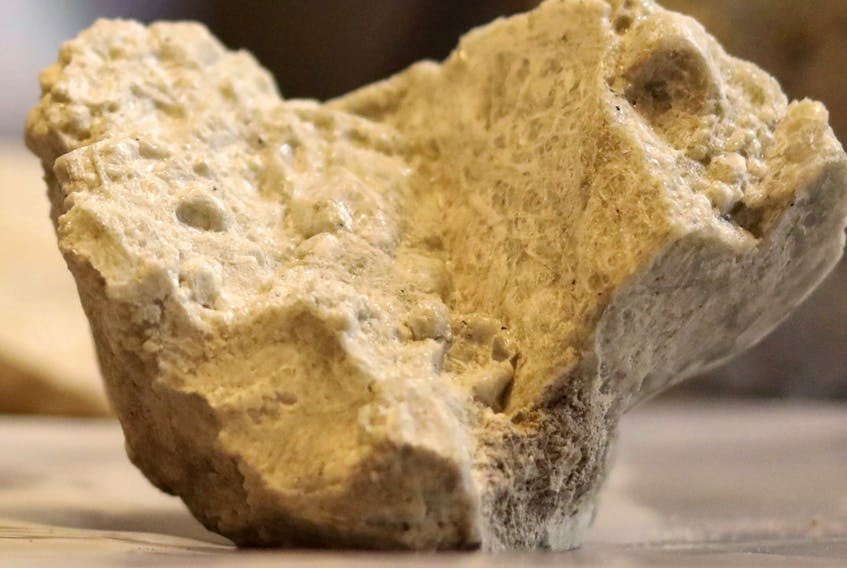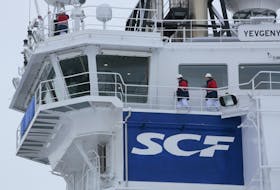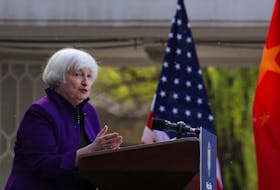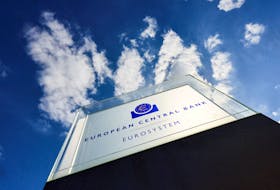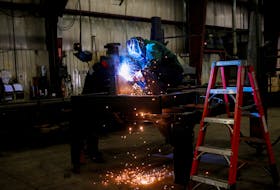After months of funding uncertainty, Nemaska Lithium Inc. on Friday announced a tentative agreement to secure as much as $600 million to build its proposed hard rock lithium mine and electrochemical plant in Quebec.
The project, which could create a new supply of the lithium needed for batteries in electric vehicles, has drawn international attention from battery makers and investments from Japan’s Softbank Group Corp. and from Investissement Quebec.
But cost overruns and shifting evaluations about lithium demand have combined to push Nemaska’s stock price down more than 80 per cent from its peak less than two years ago.
Now, London-based Pallinghurst Group, whose managing partner Arne Frandsen is betting on “an electric vehicle revolution,” has proposed a deal that could make it Nemaska’s largest shareholder: It signed a letter of intent to buy $200 million worth of the company’s shares at 25 cents apiece, plus an additional $400 million, if necessary, to ensure the project is fully funded.
“We wouldn’t have announced and put our name behind this today unless we had comfort that we would get there in the end,” Frandsen said on a conference call on Friday with Nemaska investors.
Pallinghurst has 90 days to complete its due diligence.
Under the terms of the deal, Pallinghurst would make an initial $200-million capital investment at 25 cents a share, giving it control of roughly 46 per cent of the company.
Next, Nemaska would offer its others investors a chance to buy shares at 25 cents apiece. Pallinghurst has guaranteed to fund up to an additional $400 million of share purchases to ensure that the project is fully funded. In October, Nemaska shareholders would have a chance to vote on the deal.
“This give us a good cushion and a good partner with deep pockets,” said Guy Bourassa, Nemaska chief executive. “But more importantly, it’s somebody with the same vision as us, as far as the market for lithium is concerned.”
Nemaska’s stock jumped 38 per cent on Friday to close at 30 cents, although it remains down more than 50 per cent on the year.
In February, Bourassa announced a $375-million funding shortfall — about 47 per cent of its original $800-million cost estimate to build its mine and electrochemical plant.
Bourassa says rising steel costs — a side effect of the global trade war — contributed to the cost of the project, but were mainly a result of mistakes about labour and other indirect costs.
“What really caught us off guard was the cost of manpower,” he said in February.
The company’s proposed open pit Whabouchi mine, located in the James Bay region of Quebec, near the cree community of Nemaska, would produce spodumene concentrate.
The company also is building its Shawnigan electrochemical plant, where it will use a patented process to convert the spodumene into lithium hydroxide for electric vehicle batteries. Bourassa has stressed that there’s no other similar facility in North America to argue about the value proposition of the project.
In April 2018, Softbank invested $99 million at $1.12 per share, for a 9.9 per cent stake, plus a right to purchase up to 20 per cent of the lithium from the project.
Investissement Quebec holds 13 per cent of the roughly 850 million outstanding shares, and remains the company’s largest shareholder for the moment.
Bourassa said that IQ supports the proposed deal with Pallinghurst, and that Softbank has also signalled tentative support.
Still, on Friday shareholders asked him about potential dilution under the new deal.
“It has been a very tough last 18 months in the market,” said Bourassa, adding, “It is not a question of waiting along and hoping for the markets to go up, it’s a matter of finding people interested in the project.”
The situation illustrates why few of the dozens of lithium exploration companies on the TSX-Venture exchange ever progressed to the mine construction phase.
The drop in investment has been wide-ranging: In the first half of 2018, lithium companies on the TSX and TSX-V raised approximately $828 million but raised only about six per cent of that amount, $49.6 million, in the second half of 2018.
Pallinghurst’s Frandsen said his company has set aside $1 billion for battery metal related projects.
In April, it announced a $10.2 million equity investment in Nouveau Monde, which is hoping to develop a graphite project — also a battery metal — about 240 kilometres northwest of Montreal.
While neither lithium nor graphite are considered scarce, Frandsen said his firm is committed to helping build the new supply chain for the electric vehicle industry.
“We are left with the simple task with providing the materials for batteries, and whilst that might seem like a simple task I can tell you it is not,” he said, adding “In my mind, the biggest risk that the electrical car revolution is faced with is the lack of available quality material.”
Financial Post
• Email: [email protected] | Twitter: GabeFriedz
Copyright Postmedia Network Inc., 2019

